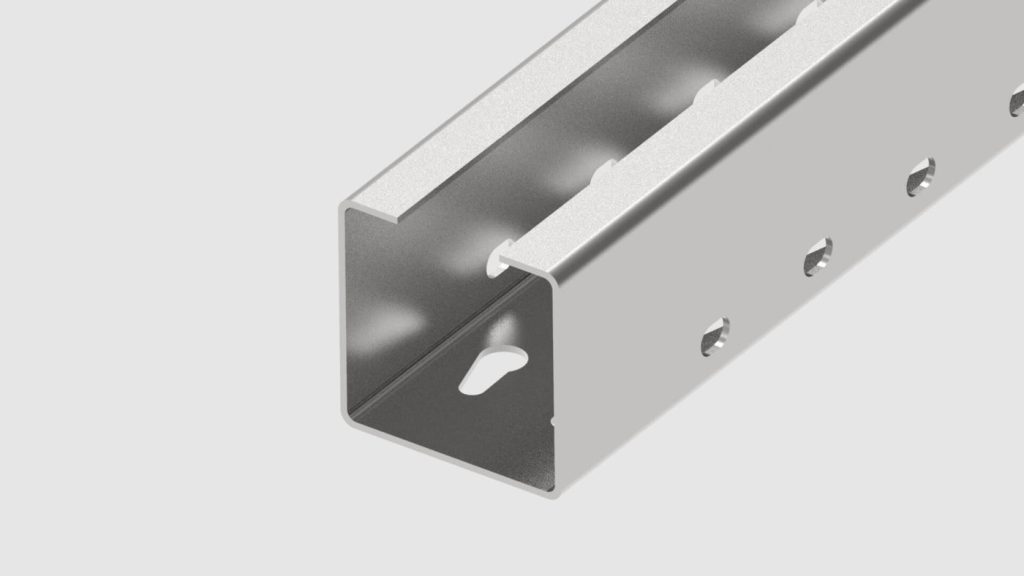Steel Uprights: What Are They and How To Use Them

Rumour has it that the earliest known steel is about 4,000 years old and was excavated in Turkey. This unique mix of iron and carbon has come a long way in forming the ‘spine’ of modern construction, as it is a crucial ingredient in the construction industry.
We find steel in high-rise buildings, industrial and residential buildings, bridges, stadiums, parking garages – and, closer to home, in retaining walls in the form of steel uprights.
Reinforcing your wall with steel posts helps you position concrete sleepers correctly. Steel uprights ensure a safe and structurally sound infrastructure. Nowadays, we are spoilt with the variety of steel upright designs that are available. One thing is sure: you shouldn’t have a problem finding a style to suit your fencing requirements.
Easy and fast to install, you can use steel uprights to create a long-lasting, stylish retaining wall. They are also ideal for use on boundary lines. Steel posts are available in various lengths to suit different wall heights.
The Function Of Steel In Construction
Steel is used in construction because it is cost-effective and robust. It binds well to concrete, and it has a similar thermal expansion factor to concrete.
Steel and concrete work well together—the combination results in solid foundations. It’s no wonder that reinforced concrete is the world’s primary building material.
Versatile steel
In this day and age, sustainability is a fundamental concept. Most responsible business owners and residential property owners want to do their bit to protect our environment. Steel is a recyclable material, representing the first good reason to use it in any construction project – also when building your retaining wall.
The low requirement to replace steel posts means that fewer resources will be used over the life of the material. Therefore, the sustainable properties of steel posts make them a logical choice, especially when considering their strength and durability.
Steel is robust enough to withstand the damage caused by natural disasters, such as tornadoes, hurricanes, and earthquakes.
Steel buildings are much more resistant to evils such as termites and even fire. Because of steel’s toughness, the owner of a structure built with steel may be able to get a good deal on insurance.
What Are Steel Columns And Uprights Used For?
A steel column is a vertical structural element used in construction. It provides essential support by carrying compressed loads or by transferring weight from a range of construction elements such as floors, foundations, ceilings, floor slabs, to name a few.
Steel is present in most modern-day retaining walls. We see it in large projects such as road construction, commercial developments, public spaces such as parks and civic buildings, and private residential properties.
A journey through any residential neighbourhood reveals how prevalent retaining walls are and how creatively they often are presented in conjunction with steel anchoring.
What Type Of Steel Will Strengthen Retaining Walls?
If you are considering building a retaining wall, it’s worth using steel posts in your foundations. Galvanized steel posts will last for many years in the ground, as they don’t deteriorate with rust.
The strength of the steel holds your retaining wall in place, and it gives you the certainty that the retaining wall you are investing hard-earned money in will be solid for years – even decades – to come.
So, don’t be tempted to go for a cheaper, ungalvanized type of steel; only settle for the best quality and well-prepared steel that will last in any conditions.
How Deep Do Steel Retaining Wall Uprights Need To Be?
Retaining wall uprights should be at least as deep as the volume of soil they will be propping up. Some people use a general rule to halve the height of the wall and then add 100mm to determine how deep the uprights should be positioned. Doing this will ensure a firm footing for your wall. When locked into place with concrete, the wall will be able to bear the weight of a heavy load of soil.
For example, if your wall is to be 800mm high, the holes for the uprights should be 500mm deep, and then concrete the uprights into position.
Even though the formula involved is reasonably easy to follow, some people feel it is too risky to do these calculations themselves and prefer to call in an expert to ensure that it is done correctly and safely.
Building A Retaining Wall With Steel Uprights And Concrete
You may be experienced and skilled at building retaining walls, or you may be the adventurous type who wants to have a go and do it yourself. Whatever the case may be, the following guidelines are merely a brief overview. There is more to learn and discover if you want to go down the DIY track.
- Step 1: Preparing the Foundations
The first step is to prepare the foundations. Mark out where the retaining wall will be built, and use stakes and string to indicate its position. Measure out where the steel uprights will be put into the ground at central points to ensure stability down the length of the retaining wall.
- Step 2: Installing Your Steel Uprights
Next, dig the holes for the steel uprights. You may want to use the formula provided elsewhere in this article. It boils down to sinking the posts to the same depth as the height of your retaining wall. When you position the posts, about half of their length should be under the surface. When you insert them, ensure they are standing firmly.
- Step 3: Building the Retaining Wall
Now it is time to build your retaining wall. Depending on the material you are using, sleepers may need to be cut to fit between the steel uprights, but it should be possible to ensure a good fit by measuring the distance between uprights before you plant them.
Steel posts usually have a slot for the sleepers to fit into. Sometimes people use wedges to hold the sleepers in position. Once you’ve inserted the sleepers, it is vital to place a water-resistant sheet behind the wall to protect it from dampness.
Your last task will be to prepare the concrete and pour it into the holes around the base of each upright. Then cover each hole with soil and wait for the concrete to set. Ensuring good drainage is another step you need to take. Pouring scoria behind the wall is an excellent way to do this, but you’ll need to position a drainage pipe on top.
TFR Construction – Your Partner In Construction
TFR Construction is Melbourne’s expert in earthworks, site preparation, retaining walls, and fencing. Building a retaining wall can be a tricky affair. Many factors come into play, such as space, shape, safety, planning, knowledge of the soil, material options, and cost – to mention a few. These are all excellent reasons to call in our retaining wall specialists to advise you before you commit to the job.
Get in touch with us if you have any questions or to schedule a no-obligation consultation. We have an experienced team that is committed to excellence and quality. We would love to have a conversation with you to understand your retaining wall needs.
Recent Posts
A Parcel for the Picking – Things to Consider When Buying Land for Your Home
Selecting the proper parcel of land might be challenging but approaching the task with the correct knowledge makes it worthwhile.
Stone Landscaping: Adding Statement Stone and Boulders to Your Landscape
Stone landscaping is low maintenance, sustainable, and extremely versatile. Here is a realistic view of the main pros and cons of stone landscaping.
5 Ways to Beautify Your Sleeper Retaining Walls
In this blog post, we examine how you can combine looks and function with the latest designs of retaining walls available today.
How Sleeper Retaining Walls Can Help with Property Water Drainage Systems
We take a closer look at why retaining walls can be a fantastic solution for redirecting water around the house and protecting your foundation.
What Is a Commercial Contractor?
Contractors who work on commercial buildings have the know-how, expertise, and certifications to handle commercial construction work. But what exactly is a commercial contractor, and do you need one for your next project? Read on to find out if a commercial contractor is right for you.
Recent Posts
A Parcel for the Picking – Things to Consider When Buying Land for Your Home
Selecting the proper parcel of land might be challenging but approaching the task with the correct knowledge makes it worthwhile.
Stone Landscaping: Adding Statement Stone and Boulders to Your Landscape
Stone landscaping is low maintenance, sustainable, and extremely versatile. Here is a realistic view of the main pros and cons of stone landscaping.
5 Ways to Beautify Your Sleeper Retaining Walls
In this blog post, we examine how you can combine looks and function with the latest designs of retaining walls available today.
How Sleeper Retaining Walls Can Help with Property Water Drainage Systems
We take a closer look at why retaining walls can be a fantastic solution for redirecting water around the house and protecting your foundation.
What Is a Commercial Contractor?
Contractors who work on commercial buildings have the know-how, expertise, and certifications to handle commercial construction work. But what exactly is a commercial contractor, and do you need one for your next project? Read on to find out if a commercial contractor is right for you.





